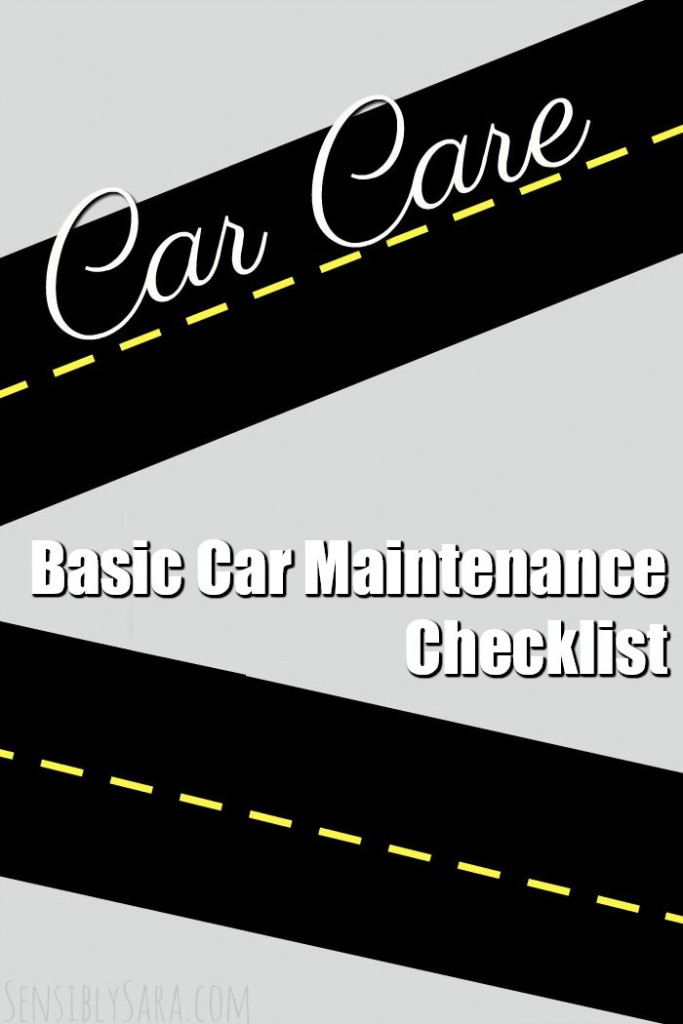Like most things in life, our vehicles need routine maintenance in order to ensure they run efficiently. There are several benefits of consistent car maintenance, including enhancing performance, improving safety, increasing longevity, minimizing roadside emergencies and saving money on costly repairs.

Monthly
Clean interior – Cleaning the interior of your vehicle includes a few steps. Throw away all trash. Vacuum the floors and seats. Wipe down the dashboard, center console and doors. Clean the windows and windshield with glass cleaner.
Check engine oil – The job of your car’s engine oil is to maintain the moving parts of the engine. Check the level with the car’s engine off and add fluid if needed.
Check exterior lights – Check brake lights, fog lights, hazard lights, headlights, tail lights and turn signals to ensure they are all working properly. Replace any lights that aren’t working.
Check tire pressure – Tire pressure affects things like braking, fuel economy, handling and riding comfort. The correct tire pressure for your vehicle can be found on the inside of the driver-side door. If the tire pressure is lower than what’s recommended, fill the tire with air. If the tire pressure is higher than what’s recommended, release air from the tire.
Wash exterior – Washing the exterior of your car removes debris, dirt and grimes, as well as reduces the likelihood of rusting.
Check windshield washer fluid – Check level and add washer fluid if needed.
Every 3 Months or Every 3,000 Miles
Check automatic transmission fluid – The purpose of automatic transmission fluid is to lubricate the components of the transmission, thus protecting the transmission and extending its life. Check the level with the car’s engine running and add fluid if needed. (Change your transmission fluid every 2-3 years or every 24,000-36,000 miles.
Check belts – Check the condition of your vehicle’s belts- serpentine (newer cars), timing, V-belt (older cars). Replace if they are showing signs of being brittle, cracked, damaged, frayed, loose or split.
Check engine air filter – The engine air filter is designed to keep contaminants, debris and dirt from getting into the engine. Check for dirt, leaks, oil or water soaks and tears; replace if needed. Otherwise, replace the filter once a year.
Change engine oil – Changing the engine oil will help maximize the life of the engine.
Replace engine oil filter – The oil filter is designed to keep debris, dirt and grime from getting into the oil when the engine is running. Replace the oil filter after each oil change.
Check exhaust – Your car’s exhaust system is comprised of the catalytic converter, the exhaust manifold, the exhaust pipe, the muffler and the oxygen sensor. The job of the exhaust system is to remove harmful gases that are produced by the engine. Listen for loud or hissing sounds, which may indicate an exhaust leak.
Check fuel filter – The fuel filter is designed to keep contaminants, debris and dirt from getting into the fuel lines. Check to see if the filter is dark brown in color, dirty or gummed up and if so, replace the filter. (Otherwise, replace every 12 months/12,000 miles if your vehicle has a carburetor and every 2 years/24,000 miles if your vehicle has a fuel injector).
Check hoses – Check hoses- brake, fuel, power steering and radiator- for signs of wear, including blisters, bubbles, bulges, chafing, cracking, drips and wet stains. Replace if necessary.
Check power steering fluid – Your car’s power steering is what helps you to easily turn your steering wheel. The power steering fluid is the hydraulic fluid that powers the car’s steering system. When the power steering levels get too low, it may become difficult to turn the steering wheel. Check level and add fluid if needed.
Every 6 Months or Every 6,000 Miles
Check battery – The car battery is designed to start the vehicle and keep it running. Check to make sure the battery itself is mounted securely. Ensure the cables are corrosion-free and tight. Check the terminals for signs of buildup or corrosion and clean with a wire brush, if needed.
Check radiator coolant (antifreeze) – The radiator coolant is designed to protect the radiator from freezing in the winter and overheating in the summer. Check the level with the car’s engine off and cooled down. If the level is low, top off with a mixture of 50% antifreeze and 50% distilled water. (Change the coolant every 2-3 years or every 24,000-36,000 miles).
Wax exterior – Waxing your vehicle creates a seal around the exterior and helps to protect it from bird droppings, the elements, salt, splattered bugs and UV rays.
Check windshield wiper blades – Driving with windshield wipers that are cracked, cut, damaged or torn can cause scratches on the windshield, thus obstructing your view. Replace the wiper blades, if needed.
Every 12 Months or Every 12,000 Miles
Check brakes – Your car’s braking system is designed to help you slow down or stop at pedestrian crossings, stop signs and traffic lights. Check drums and shoes for drum brakes and calipers, pads and rotors for disk brakes.
Head over to Mullahey Chrysler Dodge Jeep Ram to find the car for you!
Awesome content and checklist that every car owner can follow through it.